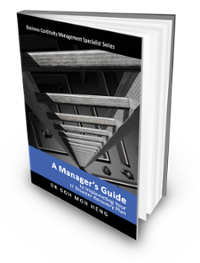Step 5: Define Scope, Objectives, and Assumptions
Design Clear Objectives
 One measurement of the Organization DR Coordinator’s success will be whether the final product satisfies the Executive Management’s requirements.
One measurement of the Organization DR Coordinator’s success will be whether the final product satisfies the Executive Management’s requirements.
In much the same way as the Organization DR Coordinator needs to know what is expected of him or her, it is essential that there be agreement as to what exactly the DR Planning implementation is going to achieve the desired outcome from the project.
One of the important outcomes is to understand the business goals of DR. Though this is initial and brief, it will provide good directions on what functional areas to be recovered, what length of time and data loss is acceptable for recovery.
Develop Clear Scope
The Organization DR Coordinator needs to consider how much of the operations will be covered. For example, whether it will be a phased recovery and whether PCs should be included if you are in a minicomputer or mainframe environment. It should also consider whether the organization expects an "immediate" recovery of all applications and business functions to full operating level or only the critical applications or business functions or something in between.
While defining the scope of the DR Planning project, the planning team will need to identify:
- Ane entire organization or just its specific business unit.
- The nature and impact of the disaster such as the worst-case scenario.
- The resources required for the project.
Document Limitations and Assumptions
In a standard project management exercise, it is important to identify the “IS” and “IS NOT” of a project. You can ensure that there is no confusion or disagreement about what will, or will not, be included within the scope of the DR Planning project. If, for example, the DR Planning project will not be addressing multiple site disasters or loss of key personnel, document this as a limitation that will be treated in a subsequent DR Planning project.
Here are some examples of assumptions:
- Staff are denied access to the office building for a sustained period of seven calendar days.
- Extend planning to commence on day two or three if the crisis is projected to exceed seven calendar days.
- Address only critical business functions and not daily operational contingencies.
- Only critical business functions will be accorded priority during the seven-calendar day period.
- No more than one country will be affected concurrently by the same disaster.
- Disaster occurs at the most vulnerable time for each business function.
- DR Plan for an IT functional unit is already in place and tested.
- Alternate staff and replacement equipment are available within planned timeframes.
It is imperative that these objectives, scope, limitations, and assumptions be in writing and signed off by the Executive Management. Any subsequent changes must also be in writing and the timeframe and resource allocations amended.
Reference

Goh, M. H. (2016). A Manager's Guide to Implementing Your IT Disaster Recovery Plan. Business Continuity Management Specialist Series (2nd ed.). Singapore: GMH Pte Ltd.
Extracted from "Step 5: Define Scope, Objectives, and Assumptions"
More Information About IT DR Blended Learning
To know more about our blended learning program and when the next course is scheduled, feel free to contact our friendly course consultant colleagues via sales.ap@bcm-institute.org. They are the BL-DR-3 Blended Learning DR-300 IT Disaster Recovery Implementer and the BL-DR-5 Blended Learning DR-5000 IT Disaster Recovery Expert Implementer.
 |
 |
 |
 |
 |
 |
Please feel free to send us a note if you have any of these questions to sales.ap@bcm-institute.org |
![FAQ [BL-DR] [5] DRP-5000](https://no-cache.hubspot.com/cta/default/3893111/e1e30273-3d46-4a5b-9f9d-11d9457a377a.png) |


![[BL-DR-5] [PD] Step 1: Establish the Need for DR Planning](https://no-cache.hubspot.com/cta/default/3893111/5a5ea2db-de6a-4467-9546-5fa344616d25.png)
![[BL-DR-5] [PD] Step 2: Research Your Work](https://no-cache.hubspot.com/cta/default/3893111/83718c17-318b-426a-8570-e1adfcbcf534.png)
![[BL-DR-5] [PD] Step 3: Develop a DR Framework](https://no-cache.hubspot.com/cta/default/3893111/d6525d69-f1cc-48bd-922e-18725c9784f0.png)
![[BL-DR-5] [PD] Step 4: Develop Corporate DR Planning Policy](https://no-cache.hubspot.com/cta/default/3893111/9f30b9f5-ddba-404d-a2e2-0ca211906993.png)
![[BL-DR-5] [PD] Step 5: Define the Scope, Objectives, and Assumptions](https://no-cache.hubspot.com/cta/default/3893111/ed7e7d14-75bb-41bd-9575-780715df9fb6.png)
![[BL-DR-5] [PD] Step 6: Manage the DR Planning Process](https://no-cache.hubspot.com/cta/default/3893111/69bd9d1e-58c9-45ba-8ac8-9e453eb590a8.png)
![[BL-DR-5] [PD] Step 7: Establish a Steering Committee and Project Planning Team](https://no-cache.hubspot.com/cta/default/3893111/d8226ec5-893c-44cf-a205-cf761dae2f56.png)
![[BL-DR-5] [PD] Step 8: Develop an Action Plan and Schedule](https://no-cache.hubspot.com/cta/default/3893111/f02847e3-414f-46a4-be4c-340f338dff83.png)
![[BL-DR-5] [PD] Step 9: Establish a Budget](https://no-cache.hubspot.com/cta/default/3893111/96a613a4-1bb1-47de-8379-61d5d90308bb.png)
![[BL-DR-5] [PD] Step 10: Obtain Commitment and Approval](https://no-cache.hubspot.com/cta/default/3893111/9f5a286c-17e0-4cab-ba4f-8cda0b6d082c.png)
![[BL-DR-5] [PD] Step 11: Manage Deadlines and Milestones](https://no-cache.hubspot.com/cta/default/3893111/1007419c-3ad1-4906-a0c0-4307ea378c99.png)
![[BL-DR-5] [PD] Step 12: Build and Maintain Teamwork](https://no-cache.hubspot.com/cta/default/3893111/b6e6d1d9-361d-4604-9e4d-134e118be976.png)



